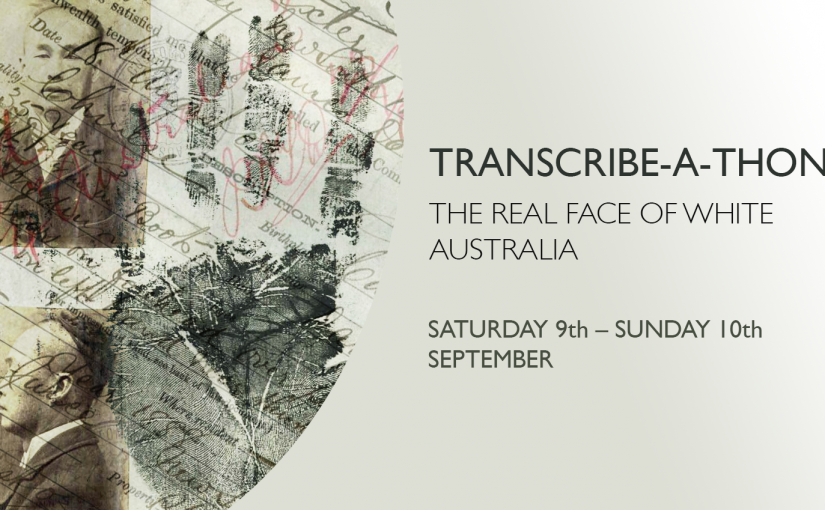This year in Exploring Digital Heritage we’ll be undertaking a major project on the White Australia Policy, working with records from the National Archives of Australia and collaborating with the Museum of Australian Democracy.
Our task will be to transcribe and analyse digitised files from Series ST84/1 in the National Archives. Under the White Australia Policy, anyone deemed not to be ‘white’ who travelled overseas had to carry special documents. Without these documents they could be subjected to the Dictation Test and denied re-entry — even though they might have been born in Australia.
These certificates contain information about ordinary people living their lives despite the restrictions imposed on them by a racist bureaucratic system. By transcribing these documents — extracting information about their names, their ages, their places of birth, their travels overseas — we hope to learn more about them and their experiences.
Only about 15% of Series ST84/1 has been digitised so far, but I estimate that there should be about 6,000 of these certificates already available online. There are two copies of most certificates, so that’s about 3,000 unique certificates. That’s a lot of transcribing!
To extract the data we’ll be making use of Scribe, a community transcription platform developed by Zooniverse and the New York Public Library. Students will develop documentation for the site and support volunteers.
The transcription site will be launched on the weekend of the 9-10 September at a ‘transcribe-a-thon’ hosted by the Museum of Australian Democracy. Across the weekend we’ll have transcription stations set up in Kings Hall. We’ll also have a series of expert speakers talking about the records and what they can tell us. Students will be managing communications and event planning related to the ‘transcribe-a-thon’. It’ll be an exciting event — come along and help!
Once we have a significant body of records transcribed we’ll start to explore how we can use digital tools and technologies to analyse, visualise, and link the data. What can we see, and what can we learn? What new research possibilities might emerge?
Lots to do, but at the end we’ll have made a real contribution to our understanding of how people lived under the weight of the White Australia Policy.
Follow this blog for more news and updates.

